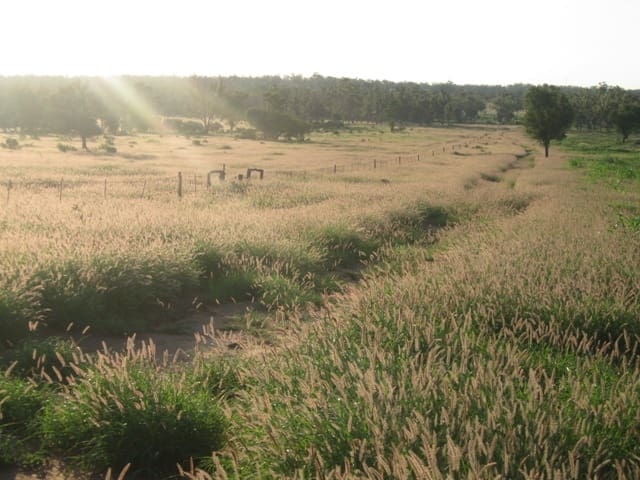INVESTIGATIVE works are continuing in an attempt to pinpoint the causes of pasture dieback across parts of northern and central Queensland after the completion of sampling and surveying activities on affected properties.

Buffel grass is one of the species affected by die-back
Early results from surveys suggest an average of about 60 percent of each respondent’s property area is being impacted by dieback.
The surveys also found that dieback is not restricted to any particular country type. This was reflected in what the survey respondents said in terms of the presence or absence of dieback being highly variable on a wide range of soil types and environmental conditions, project managers said.
The surveys so far have not uncovered links between dieback and pasture nutrition.
“The typical description about how the dieback affects plants was broadly similar for all landholders surveyed, who explained that plants first turned yellow and then developed reddish tips before going a grey/black colour,” MLA’s research, development & innovation general manager, Sean Starling said.
“These similar symptoms suggest it is the same phenomenon occurring for each of these landholders,” Mr Starling said.
Survey results have also found landholders were experiencing dieback on multiple pasture species, and incidence was occurring randomly across paddocks.
Investigative work continues into mystery problem
Investigative work is continuing in an attempt to pinpoint the cause of pasture dieback across parts of northern and central Queensland after the completion of sampling and surveying activities on affected properties.
Earlier this year, a broad action plan was launched to map, identify and address pasture dieback across central Queensland in response to increasing producer concern.
Under the approach, a cross-disciplinary team of researchers and technical experts has been assembled, with six commercial companies (including Applied Horticulture Research and Hortus Technical Services) and three research organisations (QDAF, CSU, NSW DPI).
Technical officers, coordinated by Greg Palmer, have been appointed to consult directly with landholders and collect soil, plant and other samples on properties where dieback is occurring.
In other developments:
- A group of 86 producers in a “dieback” database are now receiving regular updates
- 52 producers who have registered their properties now have access to the FarmMap4D satellite mapping service of their properties
- Soil and plant samples have been collected and analysed from around 30 properties between Rockhampton and Biggenden, with samples being examined for virus and bacteria diagnosis.
Mr Starling said segments are also being cultured in the laboratory for fungi studies, attempting to replicate the disease and cause in a controlled environment to better understand what it is and establish effective control measures.
Intervention strategies
At the same time, trials are about to start investigating a range of intervention strategies with potential to be used by affected growers to manage dieback. These tactics could include burning, slashing, grazing management, application of fungicide and cultivation.
Trials of alternative grass species that may be more resistant to dieback are also planned.
- Producers affected by dieback can attend forums initiated by AgForce Queensland at Bundaberg on 20 December, Biloela on 21 December and Emerald on 22 December, with registrations via the AgForce Events page (click here to access)
- MLA is encouraging affected property owners to continue to instigate their own investigative works on-farm, as well as continuing to work with MLA. There is also the potential for collaborative funding assistance via MLA to undertake R&D activities in partnership with producers. Any producer wanting to discuss collaborative opportunities or who suspect they have pasture dieback should get in contact Mr Starling via this email address.
Source: MLA



Hi, we are another land owner with this problem (dieback) we have notice it in the neighboring property for quite a while now. But only just recently noticed it in ours after getting our land slashed. Which we didn’t notice it because where it is affecting was behind all the long grass. What is our next step??? If we could be update it would be much appreciated. Cheers Tim and Caroline of cooroy. Qld.